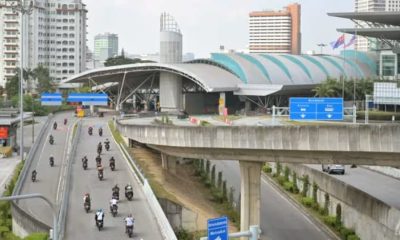KTM faces a deeper crisis as financial troubles, supply shortages, and factory shutdowns threaten the brand’s survival.

Subscribe to our Telegram channel for instant updates!
KTM has long been a brand built on speed, adrenaline, and pushing boundaries. But today, it’s grappling with a race it can’t seem to win — the race to survive.
The Austrian manufacturer, once celebrated for its aggressive expansion and racing dominance, now faces a grim financial reality. After nearly brushing with insolvency not long ago, KTM restructured its debts, negotiating a critical repayment of €600 million by next month. That deadline is now looming — and KTM admits it can’t meet it.
If that were the only issue, it would already paint a worrying picture. But things have spiralled even further: KTM has just announced it is once again halting production at its Mattighofen factory — this time until at least the end of July. When you step back, the picture becomes clearer: KTM’s factory will have essentially sat idle for an entire year.
Why This Shutdown Is Different
Previous production pauses might have been blamed on external forces — the pandemic, chip shortages, and global supply chain hiccups. But this time, KTM’s problems are largely self-inflicted. When production initially stopped last year, part orders dried up. And when KTM tried to hit the restart button, their suppliers didn’t exactly roll out the welcome mat.
It’s not hard to see why. With ongoing insolvency proceedings and a shaky financial outlook, suppliers have little faith KTM can pay its bills. As a result, critical parts simply aren’t arriving, meaning even if the factory doors are open, the bikes aren’t getting built.
In short, KTM isn’t just struggling with production. It’s struggling with trust.

A Factory Without Bikes and a Workforce in Limbo
CEO Gottfried Neumeister recently delivered the tough news to KTM employees via video message: production can’t continue because of parts shortages. Stocks were only sufficient to build around 4,200 bikes — an alarmingly low number for a brand of KTM’s size — and now even those are exhausted.
To avoid mass layoffs, KTM has taken drastic steps: starting in May, around 3,000 employees in Austria will shift to a 30-hour workweek, with corresponding wage adjustments. It’s a stopgap to buy time — but not a solution.
Because the cold reality remains: without parts, without cash flow, and without the ability to pay back creditors, KTM’s problems are only compounding.
What Happens Next for KTM?
The brand hopes to resume production in late July — but that’s a big “if.” Securing enough capital to satisfy creditors and rebuilding supplier relationships will be a monumental task. Every day KTM remains stalled, supplier trust erodes further, dealerships fill with unsold inventory, and brand confidence weakens.
And in the brutally competitive motorcycle industry, where agility and reliability are king, this kind of uncertainty is a death sentence if it drags on too long.
A Bigger Lesson for the Industry
KTM’s struggles are more than just one brand’s crisis — they’re a cautionary tale. In a high-risk, high-reward industry, aggressive expansion without financial prudence can backfire spectacularly. KTM’s spirit of relentless growth made it a fan favourite, but now that same relentless push has left it dangerously overextended.
For now, KTM still has loyal fans, a proud racing heritage, and some glimmers of hope. But survival will require more than just tough talk and bold promises. It will demand something KTM isn’t used to relying on: patience, humility, and hard financial realism.
The question isn’t just whether KTM can make motorcycles again. It’s whether KTM can rebuild the trust it once took for granted.





























Facebook
Instagram
X (Twitter)
YouTube
LinkedIn
RSS